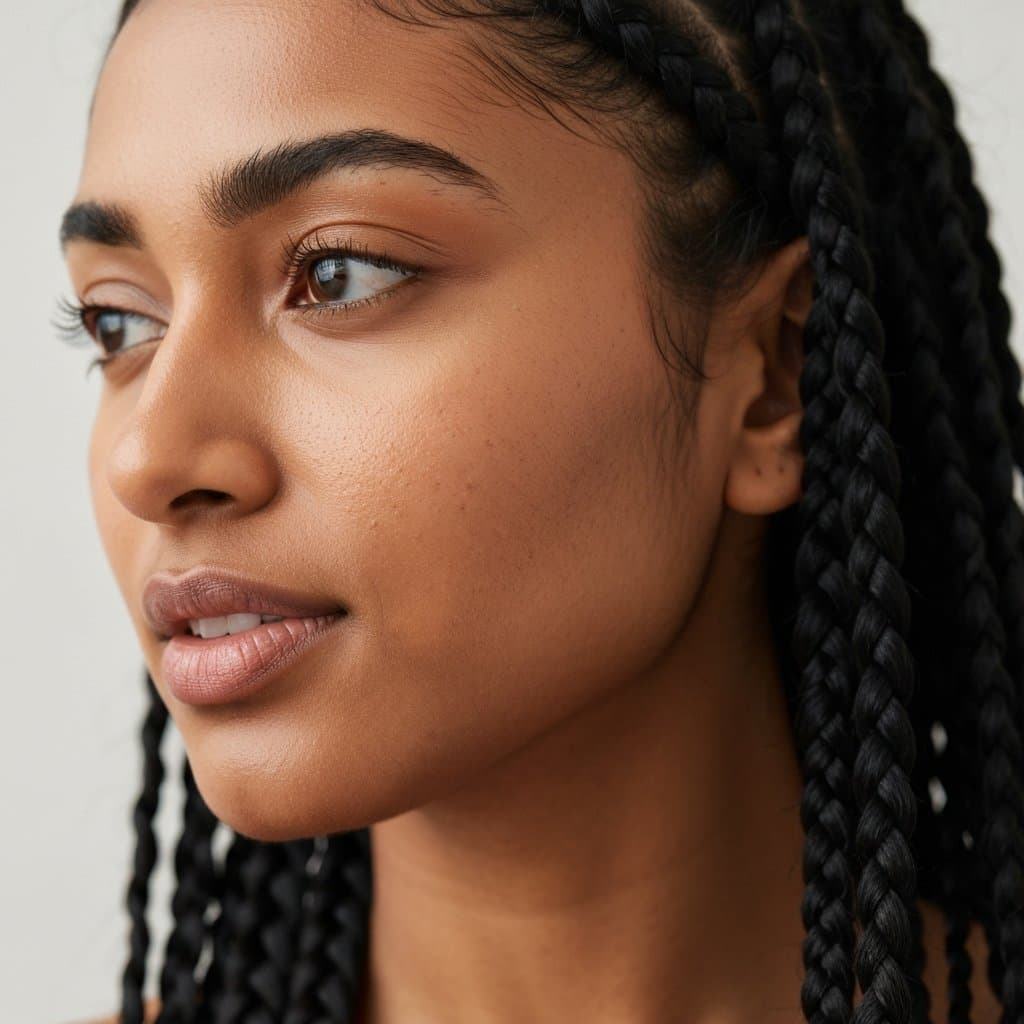The Knotless Braids Obsession: Why This Protective Style is Taking Over | Your Ultimate Guide
The Rise of a Hair Revolution: An Introduction to Knotless Braids
In the ever-evolving world of hair fashion, few styles have captured our collective attention quite like knotless braids. Scroll through any social media feed, and you'll see them adorning the heads of celebrities, influencers, and style enthusiasts alike. But this isn't just a fleeting trend; it's a full-blown movement. The knotless braids obsession is rooted in a revolutionary approach to a classic style, prioritizing hair health without sacrificing an ounce of chic. This innovative technique has transformed the protective styling landscape, offering a pain-free, natural-looking, and incredibly versatile alternative to traditional box braids.
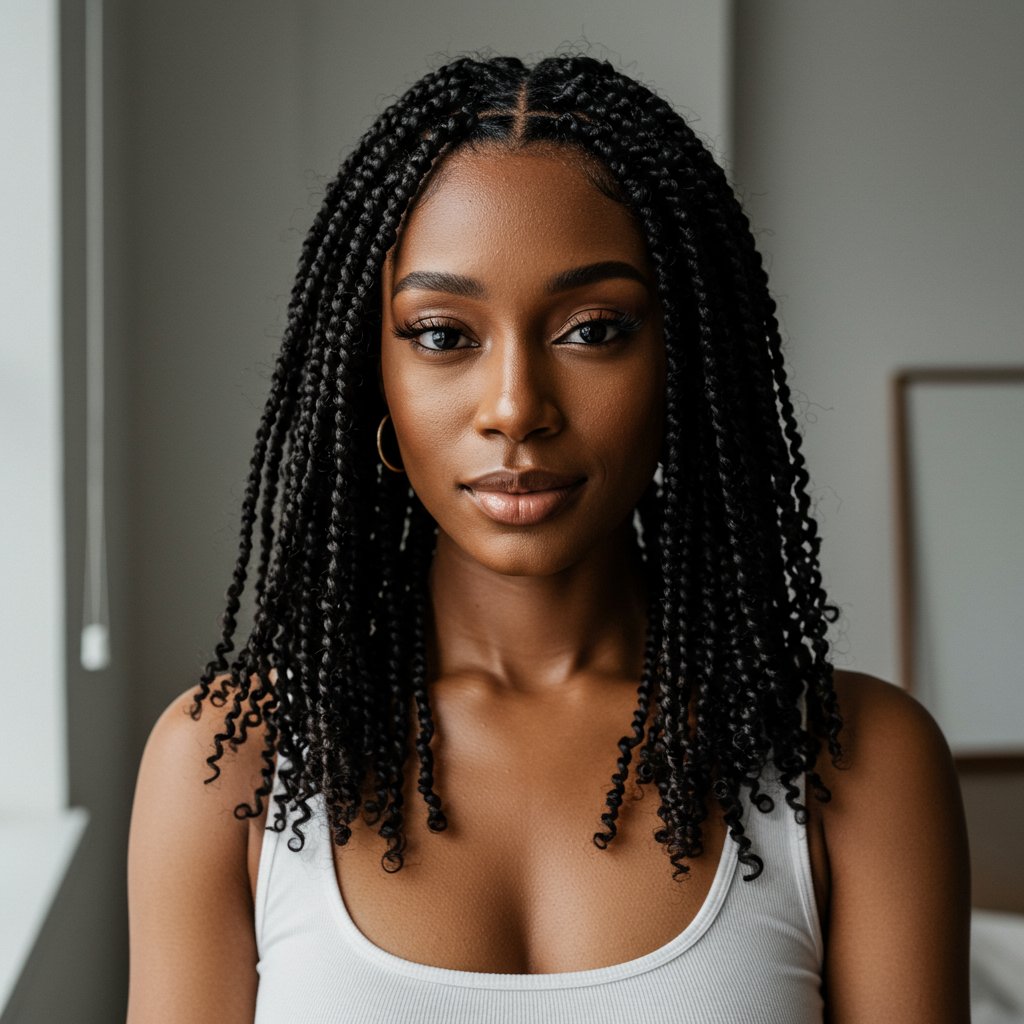
For decades, braids have been a cornerstone of Black hair culture—a beautiful and practical way to protect natural hair, promote growth, and express personal style. However, the traditional method, which involves creating a small knot at the base of the scalp to anchor the extension, often came with a significant drawback: tension. This tension could lead to discomfort, headaches, and even long-term damage like traction alopecia. Enter knotless braids, a game-changing method that eliminates the anchor knot entirely. By gradually feeding in extension hair to the natural hair, stylists create a braid that lays flat, moves freely, and places significantly less stress on the scalp and follicles.
This comprehensive guide will delve deep into the knotless braids obsession, exploring every facet of this beloved protective style. We'll break down the technique, uncover the extensive health benefits, compare it directly to its traditional counterpart, and provide you with expert tips on installation, maintenance, and styling. Whether you're a seasoned braid wearer or a curious newcomer, prepare to discover why knotless braids are more than just a hairstyle—they're a commitment to healthier, happier hair.
What Exactly Are Knotless Braids? The Technique Explained
The magic of knotless braids lies in their unique installation method. Unlike traditional box braids, which start with a tight knot of extension hair looped around the base of a section of natural hair, the knotless technique begins with your own hair. The stylist starts by braiding a small section of your natural hair and then, a few stitches down, begins to gradually and seamlessly feed in small pieces of braiding hair. This “feed-in” method is the core of what makes the style so different and desirable.
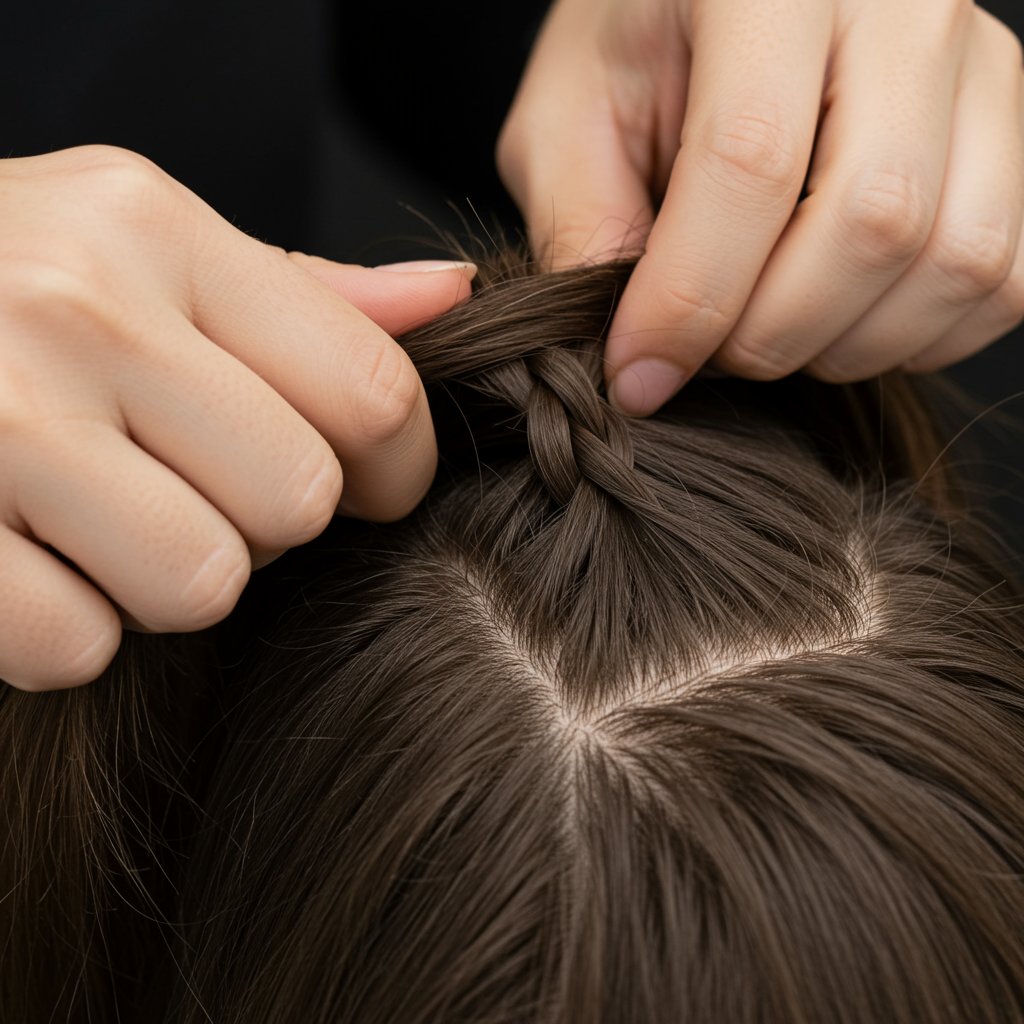
This process creates a braid that appears to grow directly from the scalp, resulting in a remarkably flat and natural-looking finish. There's no bulky knot at the root, which is the signature (and often problematic) feature of traditional braids. The tension is distributed evenly along the braid shaft rather than being concentrated at the follicle. This not only makes the initial installation far more comfortable but also significantly reduces the risk of scalp irritation and hair breakage at the root, a common complaint with heavier, tighter styles.
The skill of the stylist is paramount in achieving the perfect set of knotless braids. It requires a delicate touch and a precise understanding of how much extension hair to add and when. This meticulous technique is why the installation process can sometimes take longer and be more costly than traditional methods. However, the payoff—in terms of comfort, scalp health, and aesthetic appeal—is why so many are happily making the switch. The result is a lighter, more flexible style that feels as good as it looks from the moment you leave the salon chair.
The Health Benefits: Why Your Scalp Will Thank You
The primary reason for the widespread knotless braids obsession is the profound impact on hair and scalp health. By eliminating the tension-heavy anchor knot, this style offers a host of benefits that make it a superior choice for anyone looking to protect their hair while minimizing damage. The most significant advantage is the drastic reduction in tension, which directly combats the risk of traction alopecia—a form of hair loss caused by constant pulling on the hair follicles. With knotless braids, your edges and hairline are safer, as they are not subjected to the intense, localized stress that can weaken and eventually destroy follicles.
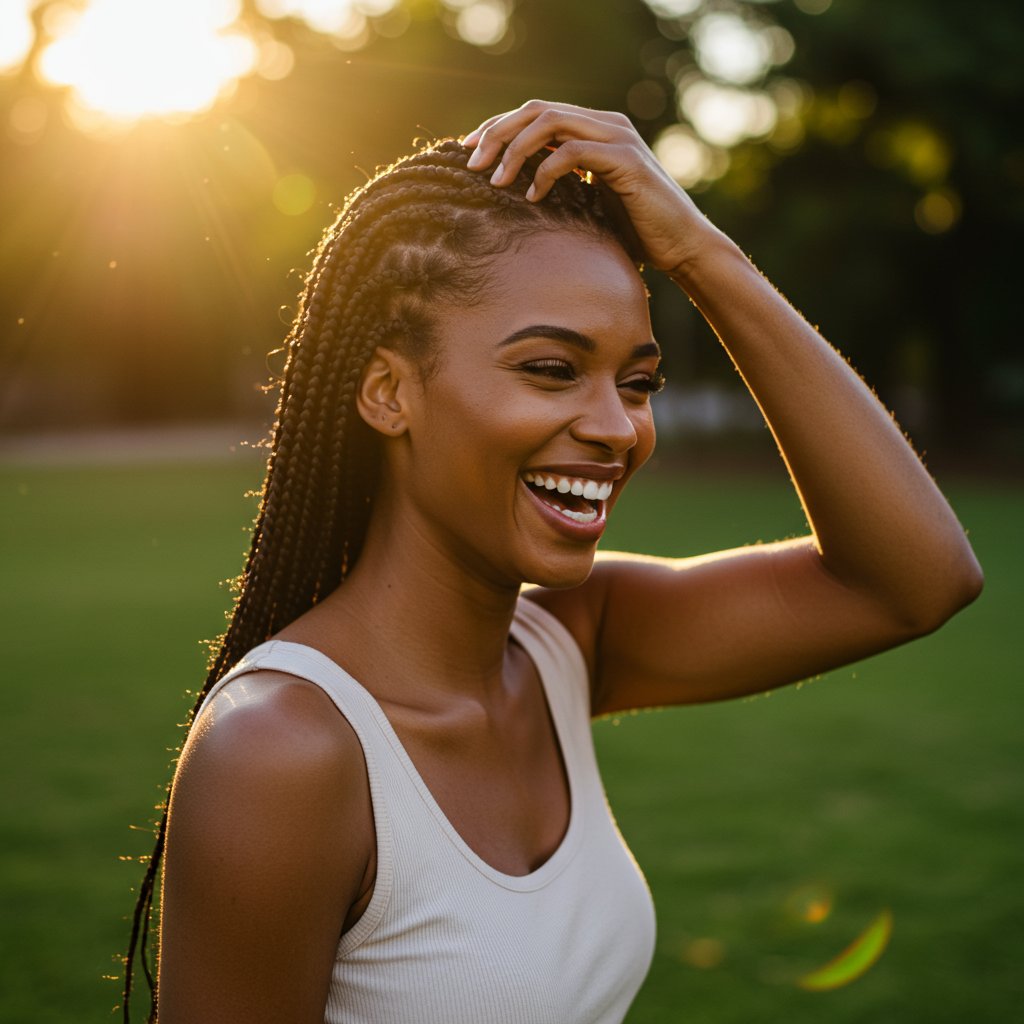
Comfort is another major health perk. Many who have worn traditional braids can recall the initial days of tightness, headaches, and difficulty sleeping. Knotless braids are virtually pain-free from the very first moment. They are significantly lighter because the extension hair is added gradually, and they offer immediate flexibility. You can pull your hair into a ponytail or an updo on day one without the stiff, scalp-pulling resistance. This makes them an ideal choice for those with sensitive scalps or anyone who leads an active lifestyle and needs a style that moves with them.
Furthermore, the flat-laying nature of knotless braids allows for better access to your scalp. This is crucial for maintaining a healthy foundation for hair growth. It's easier to cleanse your scalp, apply moisturizing oils, and treat any dryness or itchiness without a bulky knot obstructing the way. This improved scalp care regimen, combined with the low-tension nature of the style, creates an optimal environment for hair retention and growth while wearing a protective style.
Unmatched Versatility and Styling Freedom
Beyond the health benefits, knotless braids offer an unparalleled level of styling versatility right from the start. The absence of a stiff, bulky knot at the base means the braids are supple and movable from the moment the last braid is completed. You can sweep them into a high ponytail, a chic bun, or elegant updos without waiting for them to “loosen up.” This immediate flexibility is a major selling point for those who love to switch up their look frequently.
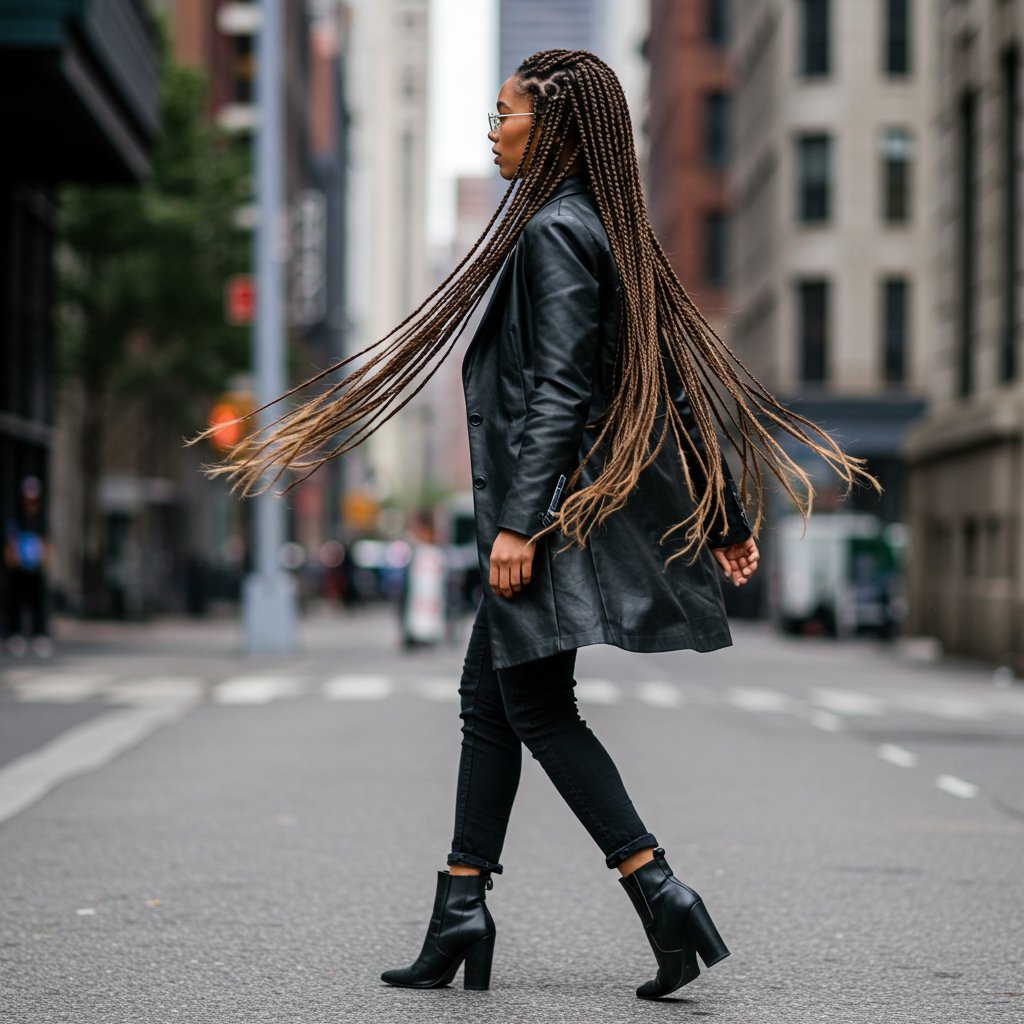
The seamless transition from natural hair to extension also provides a more refined and sophisticated aesthetic that lends itself to a wide array of styles. Consider the popular 'bohemian' or 'goddess' knotless braids, where curly or wavy strands are left out along the length of the braid for a soft, romantic look. This style is much easier to achieve and looks more natural with a knotless base. From micro-sized braids for a delicate look to jumbo knotless braids for a bold statement, the technique can be adapted to any preference. The addition of beads, cuffs, and colorful strings is also enhanced by the sleek foundation.
This versatility extends to everyday wear. Because knotless braids lay flatter against the head, they are more comfortable under hats, scarves, and even wigs. They don't create the same bulk as traditional braids, offering a smoother silhouette. Whether you're aiming for a professional look for the office, a glamorous style for a special event, or a casual, low-maintenance look for vacation, knotless braids provide the perfect canvas.
The Installation Process: What to Expect at the Salon
Preparing for a knotless braid installation is a multi-step process that begins before you even sit in the stylist's chair. The foundation of a long-lasting, beautiful style is properly prepped hair. Professional salons will always recommend arriving with your hair thoroughly washed, detangled, and deep-conditioned. This ensures your natural hair is clean, moisturized, and strong enough to be braided. Most stylists prefer the hair to be stretched or blow-dried straight, as this makes it easier to part cleanly and braid smoothly, preventing tangles and ensuring a sleek finish.
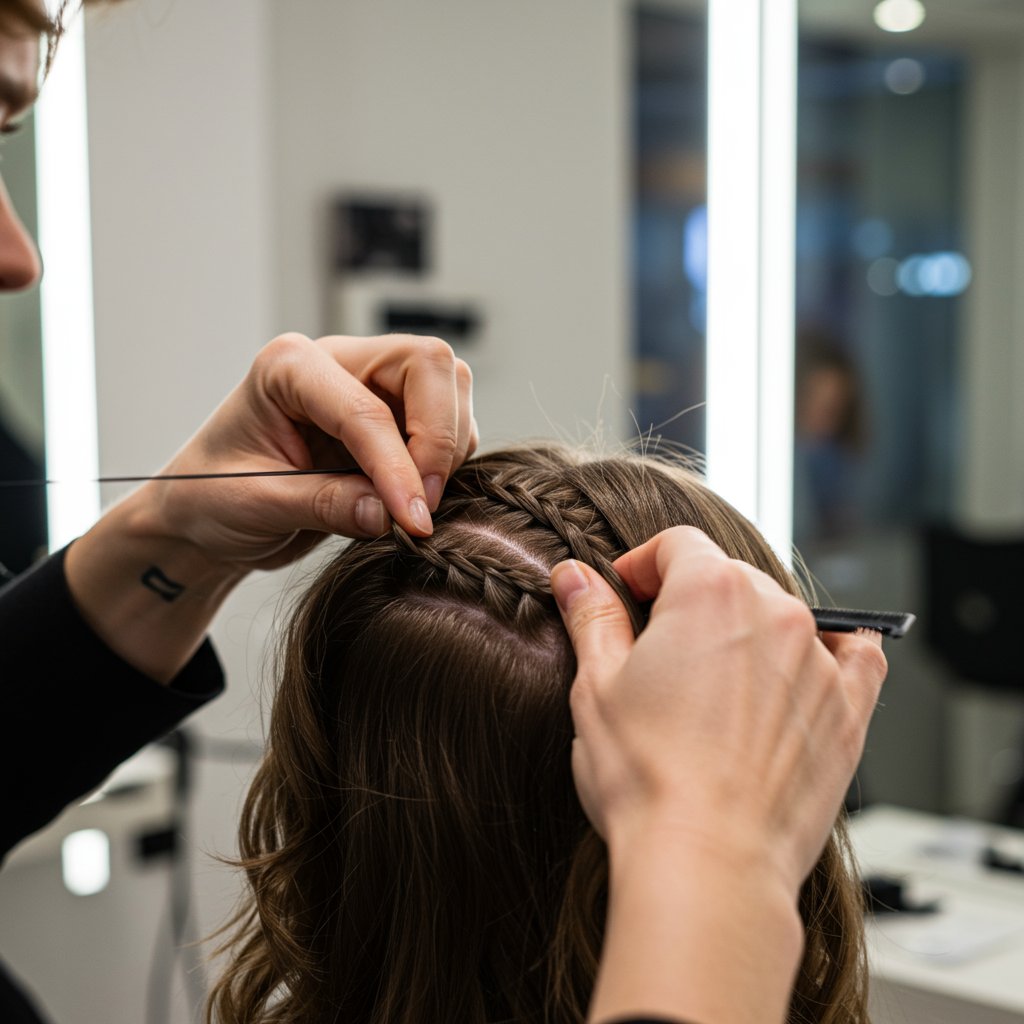
Once you're settled, the stylist will begin the meticulous parting process. The grid of your braids—be it box parts, triangle parts, or a more freeform design—is crucial to the final look. Clear communication with your stylist about your desired braid size and parting style is key at this stage. After sectioning off the first piece of hair, the braiding begins. The stylist will start braiding just your natural hair for the first few links before introducing the first small piece of extension hair. This is the 'feed-in' moment that defines the knotless technique.
As the stylist braids down the shaft, they will continue to add small, incremental pieces of braiding hair until the desired thickness is achieved. This is repeated meticulously across your entire head. It's a labor-intensive process that requires precision and patience, which is why installation times can range from 4 to 9 hours or more, depending on the braid size and length. While it's a significant time commitment, the comfortable, lightweight, and stunning result is a testament to the artistry and skill involved in creating the perfect set of knotless braids.
Knotless vs. Traditional Box Braids: A Head-to-Head Comparison
When choosing a protective style, understanding the key differences between knotless and traditional box braids is essential. While both styles are beautiful and offer protection, they diverge significantly in technique, feel, and impact on hair health. This head-to-head comparison will help you decide which style is the right fit for your needs.
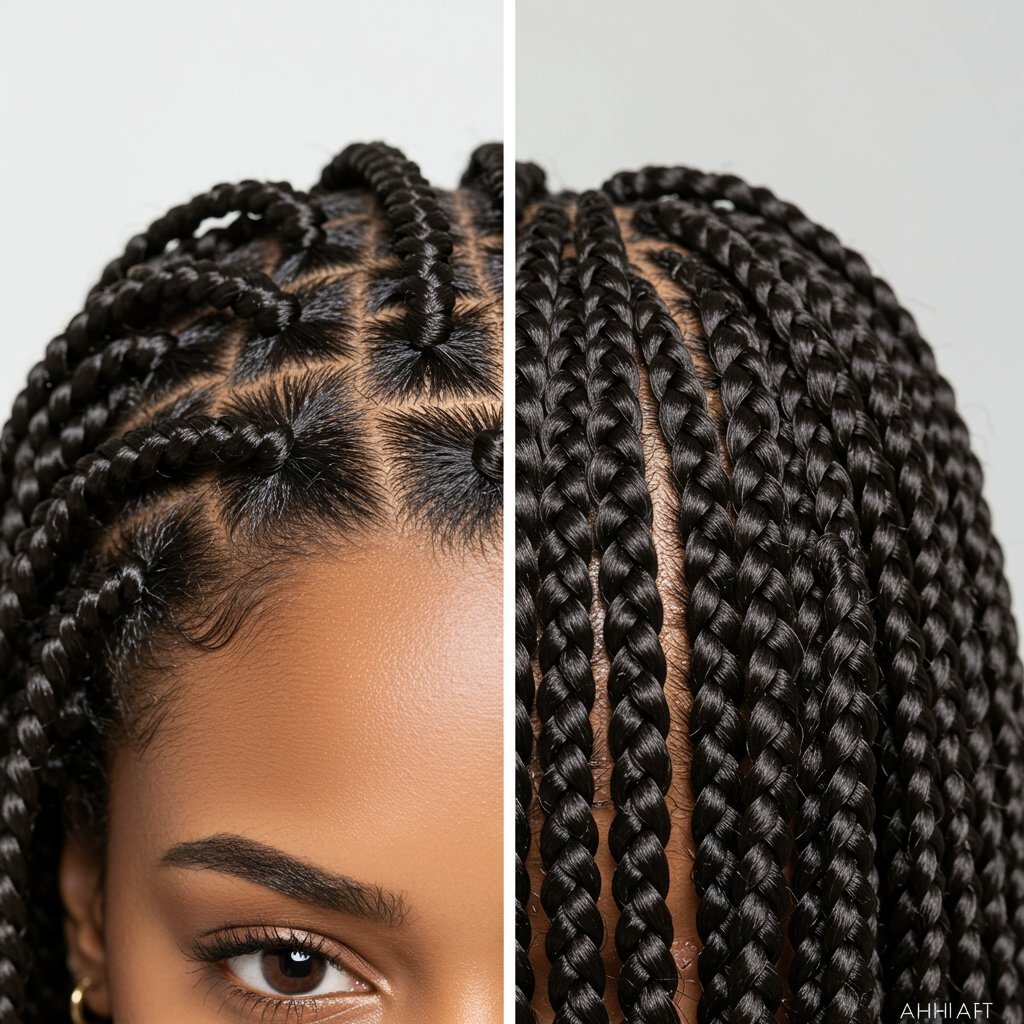
Tension & Comfort
Knotless Braids: The clear winner in this category. The feed-in method eliminates the high-tension knot at the base, resulting in a pain-free experience from the start. They are lightweight and flexible immediately after installation. Traditional Box Braids: The knot at the base creates significant tension on the scalp, which can cause discomfort, headaches, and tenderness for the first few days. They are often stiff initially and require time to loosen up.Appearance & Aesthetics
Knotless Braids: Offer a more natural, seamless look. The braids appear to be growing directly from the scalp, laying flat for a sleek and modern finish. Traditional Box Braids: Provide a classic, iconic look with a more pronounced and defined grid due to the small knot at the base of each braid. This look is bold and has its own timeless appeal.Longevity & Durability
Knotless Braids: With proper care, they can last from 4 to 8 weeks. Because they start with natural hair, the base can be more prone to frizz over time as new growth appears. Traditional Box Braids: The secure anchor knot can sometimes give them a slight edge in longevity, often looking neater at the root for a longer period. They typically last 6 to 8 weeks.Installation Time & Cost
Knotless Braids: The meticulous feed-in technique requires more skill and time. As a result, installation is generally longer and more expensive than traditional braids. Traditional Box Braids: The installation process is typically faster because the knot allows the stylist to establish the braid's thickness and grip from the very beginning. This often translates to a lower cost.Essential Aftercare: Making Your Knotless Braids Last
Investing time and money into a beautiful set of knotless braids means you'll want to make them last as long as possible while keeping your natural hair healthy underneath. A consistent aftercare routine is non-negotiable. The goal is to keep your scalp clean, your hair moisturized, and frizz at bay.
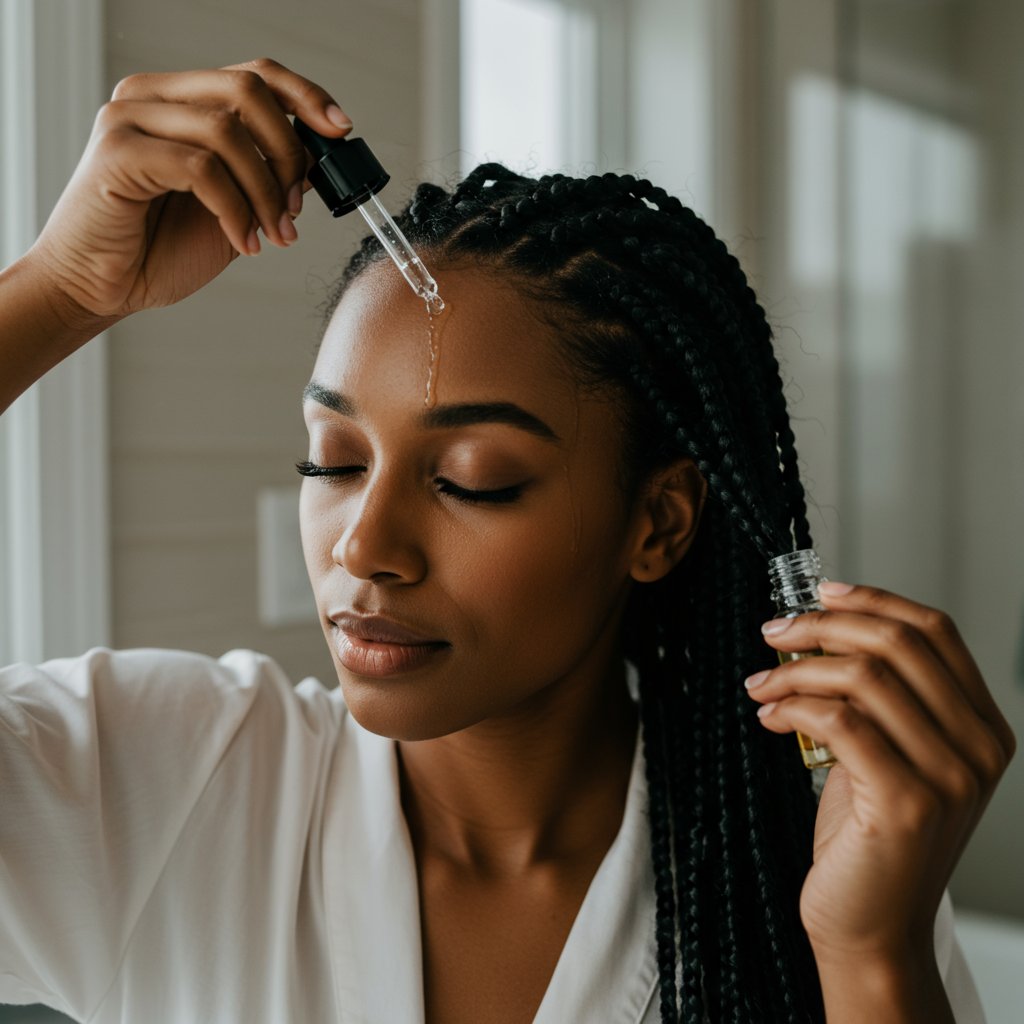
Scalp Care is Paramount
A healthy scalp is the foundation of healthy hair. Since your scalp is more accessible with knotless braids, take advantage of it. Cleanse your scalp every 7-10 days using a diluted, sulfate-free shampoo applied with a nozzle bottle. Gently massage the scalp with your fingertips (not nails) and rinse thoroughly. Between washes, you can use a cloth soaked in witch hazel or sea breeze to remove product buildup. Follow up by applying a lightweight natural oil like jojoba, grapeseed, or almond oil directly to your scalp to keep it moisturized and prevent dryness and itching.Nighttime Protection
To protect your braids from friction-induced frizz and to preserve the neatness of your parts, nighttime protection is crucial. Always sleep with your hair covered in a silk or satin bonnet, scarf, or by using a silk/satin pillowcase. This prevents the braids from rubbing against cotton bedding, which can cause moisture loss and rough up the hair cuticle. For very long braids, gathering them into a loose, low bun before covering them can prevent them from getting tangled as you sleep.Managing Frizz and New Growth
As time goes on, you'll naturally see some new growth and potential frizz. To refresh your style, you can apply a light, alcohol-free mousse over the braids and wrap them with a scarf for about 30 minutes. This will help lay down any flyaways and restore a sleek appearance. A good edge control can be used to neaten up your hairline. It’s important to know when it’s time for a takedown. Keeping braids in for too long (beyond 8 weeks) can lead to matting and tangling of your new growth, which can cause breakage during removal.Pro Tips for the Perfect Knotless Braid Experience
- Choose a Skilled Stylist: This is the most important tip. Knotless braids are a technique-sensitive style. Research stylists, look at their portfolios, and read reviews to find someone experienced in this specific method.
- Communicate Clearly: Be specific about the size, length, and parting you want. Bring inspiration photos to ensure you and your stylist are on the same page before the braiding begins.
- Invest in Quality Hair: Use high-quality, pre-stretched kanekalon or synthetic braiding hair. It's lighter, less irritating to the skin, and easier for the stylist to work with, resulting in a neater finish.
- Proper Hair Prep is Non-Negotiable: Arrive at your appointment with your hair thoroughly washed, deep-conditioned, detangled, and stretched. This creates the best canvas for your stylist and protects your hair.
- Don't Go Too Small: While micro knotless braids are beautiful, extremely small braids can put more tension on individual hair strands. Opt for a size from small to medium for the healthiest balance.
- Listen to Your Scalp: Even though knotless braids are low-tension, if any particular braid feels too tight or painful, speak up immediately. A good stylist will happily correct it.
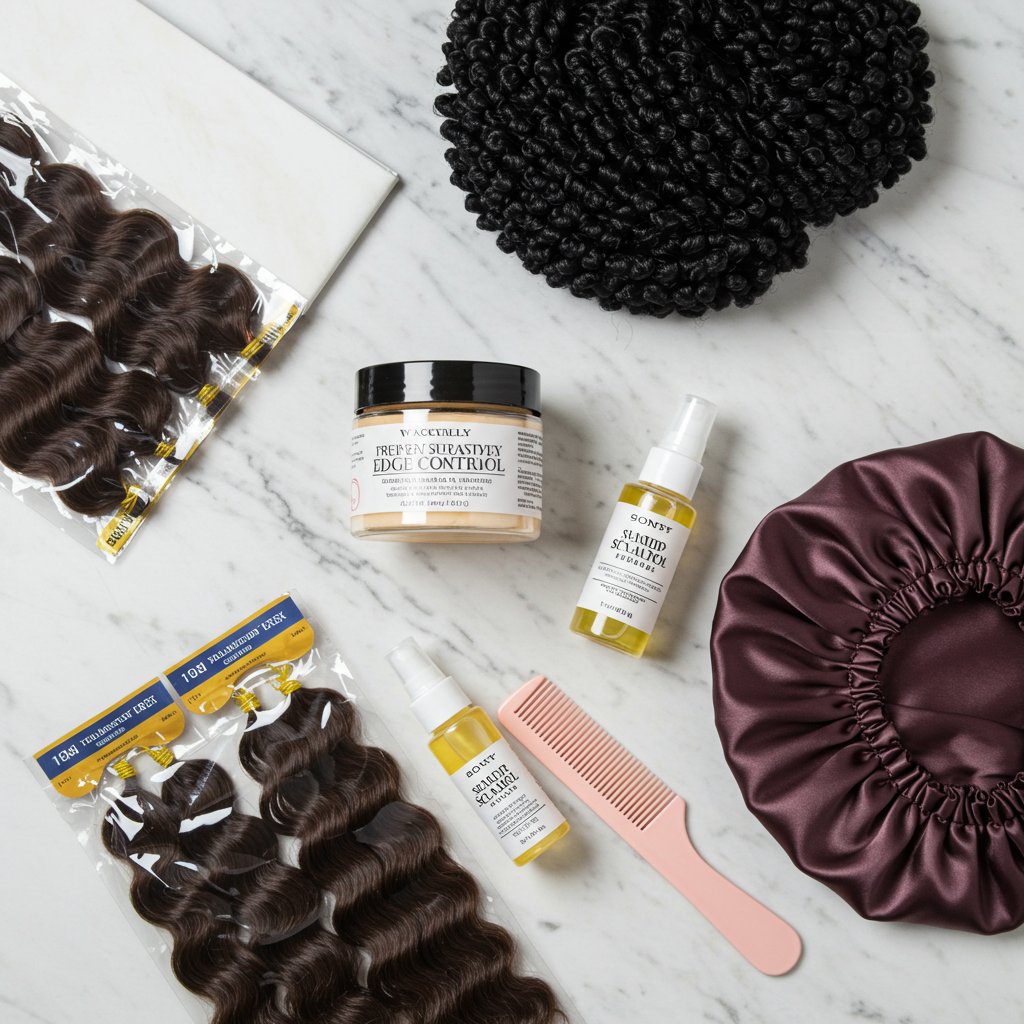
Frequently Asked Questions About Knotless Braids
Do knotless braids damage your hair?
When installed and maintained correctly, knotless braids are one of the least damaging protective styles available. Because they eliminate the high-tension knot at the root, they significantly reduce the risk of traction alopecia and breakage. Damage typically occurs if they are installed too tightly, left in for too long, or removed improperly.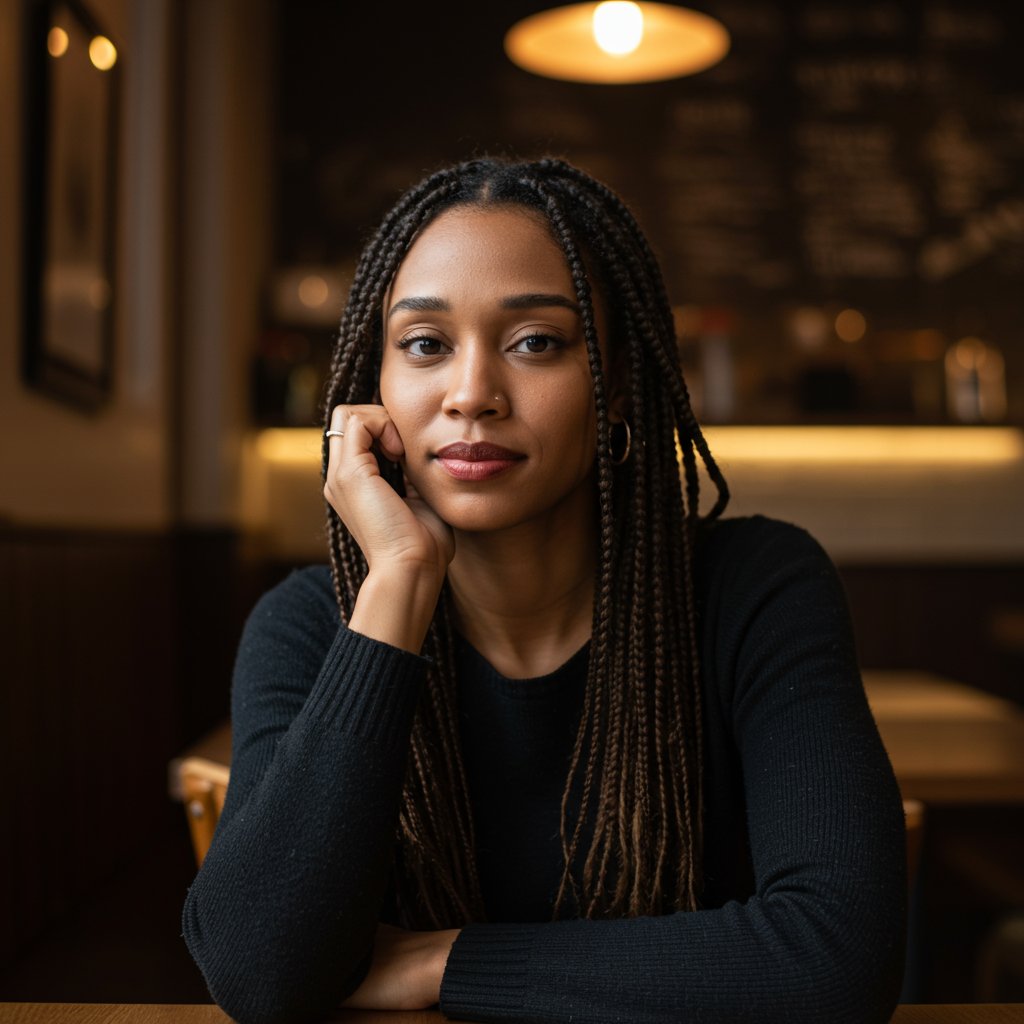
How long do knotless braids take to install?
The installation time varies greatly depending on the desired size and length of the braids, as well as the stylist's speed. On average, you can expect the process to take anywhere from 4 to 9 hours. Small or extra-long braids can take even longer.Can I get knotless braids with short hair?
Yes, you can get knotless braids with short hair, but you'll need a certain minimum length for the stylist to grip. Generally, at least 2-3 inches of natural hair is required. A stylist specializing in braiding shorter hair will be able to provide the best results.What kind of hair is best for knotless braids?
Most stylists prefer to use high-quality, pre-stretched synthetic braiding hair, such as Kanekalon. This hair is lightweight, has a texture that blends well with natural hair, and is less prone to tangling during installation.How much do knotless braids typically cost?
The cost of knotless braids is generally higher than traditional box braids due to the increased time and skill required. Prices can range widely from $150 to over $600, depending on your location, the stylist's experience, and the size and length of the braids.How do I wash my hair with knotless braids?
Focus on cleansing your scalp. Dilute a sulfate-free shampoo with water in a nozzle-tip applicator bottle and apply it directly to your scalp. Gently massage with your fingertips, let the suds run down the length of the braids, and rinse thoroughly. Avoid vigorous scrubbing, which can cause frizz and disrupt the braids.Conclusion: Embrace the Healthy Hair Movement
The knotless braids obsession is far more than a passing aesthetic choice; it's a celebration of innovation in hair care. This technique has rightfully earned its place at the top of the protective styling hierarchy by offering a beautiful, versatile, and—most importantly—health-conscious alternative to a timeless classic. By prioritizing the well-being of the scalp and follicles, knotless braids allow individuals to protect their natural hair and encourage growth without the pain and potential damage associated with high-tension styles.
From their natural, seamless appearance to their immediate comfort and styling flexibility, the benefits are undeniable. They represent a shift in the industry towards methods that not only look good but feel good, too. Whether you're a long-time braid aficionado looking for a healthier option or someone considering protective styling for the first time, knotless braids offer a compelling and beautiful solution. To experience the difference for yourself, consult with a professional, experienced stylist who can bring your healthy hair vision to life.

